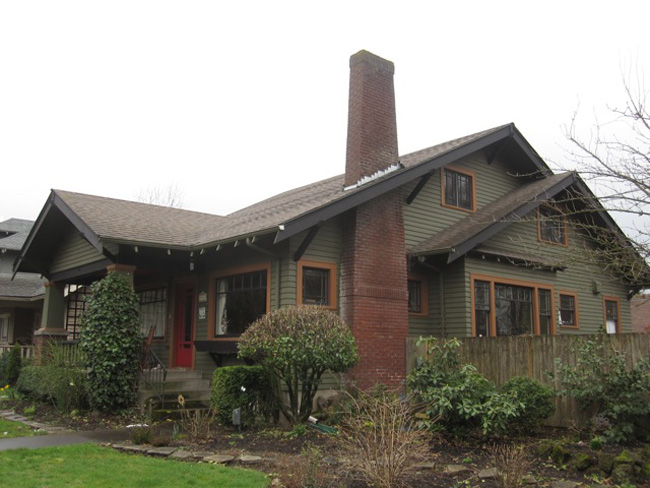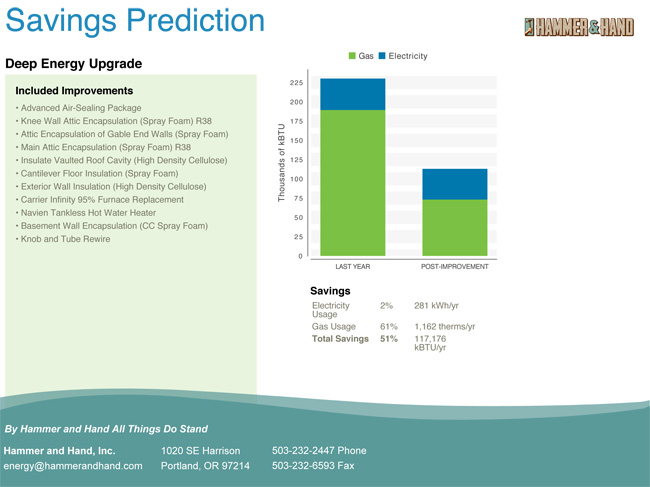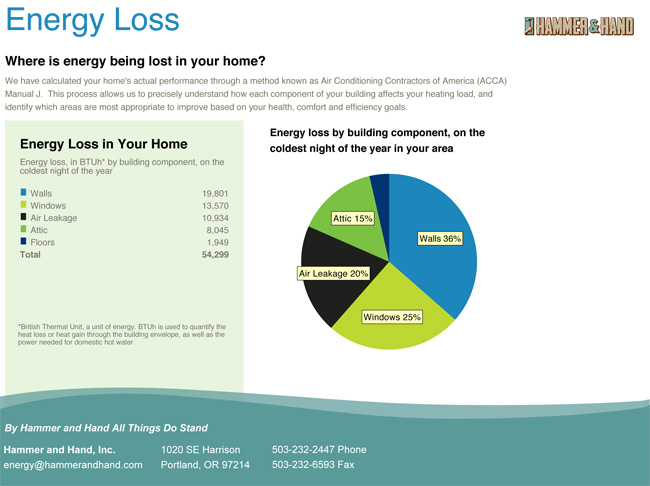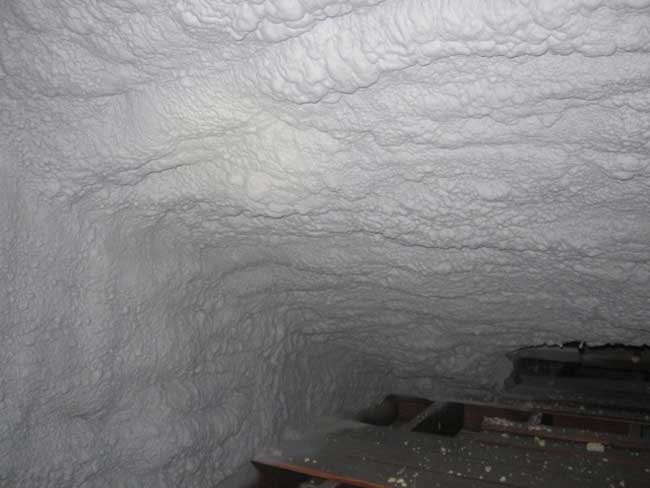Home energy retrofit measures transforms the performance of client’s home.
The 1925 Craftsman bungalow in Northeast Portland was so leaky there was really no point in turning on the heat. It was just too expensive. The place was so cold in the winter it actually became a joke between our soon-to-be client and his friends. And when the furnace did turn on it sounded like a jet taking off in the basement. The house never had consistent temperatures – hot by the vents and cold everywhere else.
Great house, poor performance.

Our client knew it was time to do something, but paying upfront for an energy retrofit just wasn’t an option.
When the Clean Energy Works Portland pilot came around, our client saw his opening. He liked the idea of financing home energy improvements over 20 years on his gas bill so he seized the opportunity to transform his home’s performance.
When Hammer & Hand’s resident energy expert Skylar Swinford conducted his comprehensive home performance assessment of the home, complete with blower door fan test, site audit, and computer modeling, he found that the energy savings from a combination of strategic retrofit interventions would offset much of the cost of that retrofit, and make the home comfortable and livable year-round.

The first step: get the air leakage under control. Second: insulate the walls and attic.

Skylar and his team air sealed the house using a water-blown spray foam insulation. They then insulated the walls from the exterior as seen in the photo below. He used an environmentally-friendly cellulose insulation installed at high density to provide insulation and seal off drafts.

And rather than using traditional insulation techniques in the attic and knee-wall areas, Skylar applied high-performance spray foam at the roof line (see photo below) to create clean and contained storage spaces that are airtight and draft-free.

The team also upgraded the mechanical systems of the home, installing a new high-efficiency furnace with a variable-speed fan to provide more consistent and even air-flow throughout. And rather than using an HVAC system that re-circulated air from inside the house, Skylar added two important ventilation components: a fresh-air intake to the HVAC return, and a continuous exhaust fan to provide consistent and constant air changes.
How does the house feel now? It’s comfortable, summer temperatures are refreshing, the house is quieter and the air is more consistent. And the client is super satisfied because now his home’s performance matches its architectural charm.
“The client told me that his favorite thing about the retrofit, aside from the energy savings, is how fresh the air is in the house,” says Skylar. “This goes to show that investing in ventilation improvements, in addition to air sealing and insulation, is the final piece of the puzzle to make a truly high-performing home.”
– Zack
Back to Field Notes